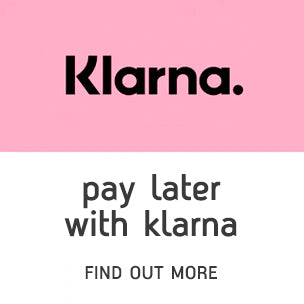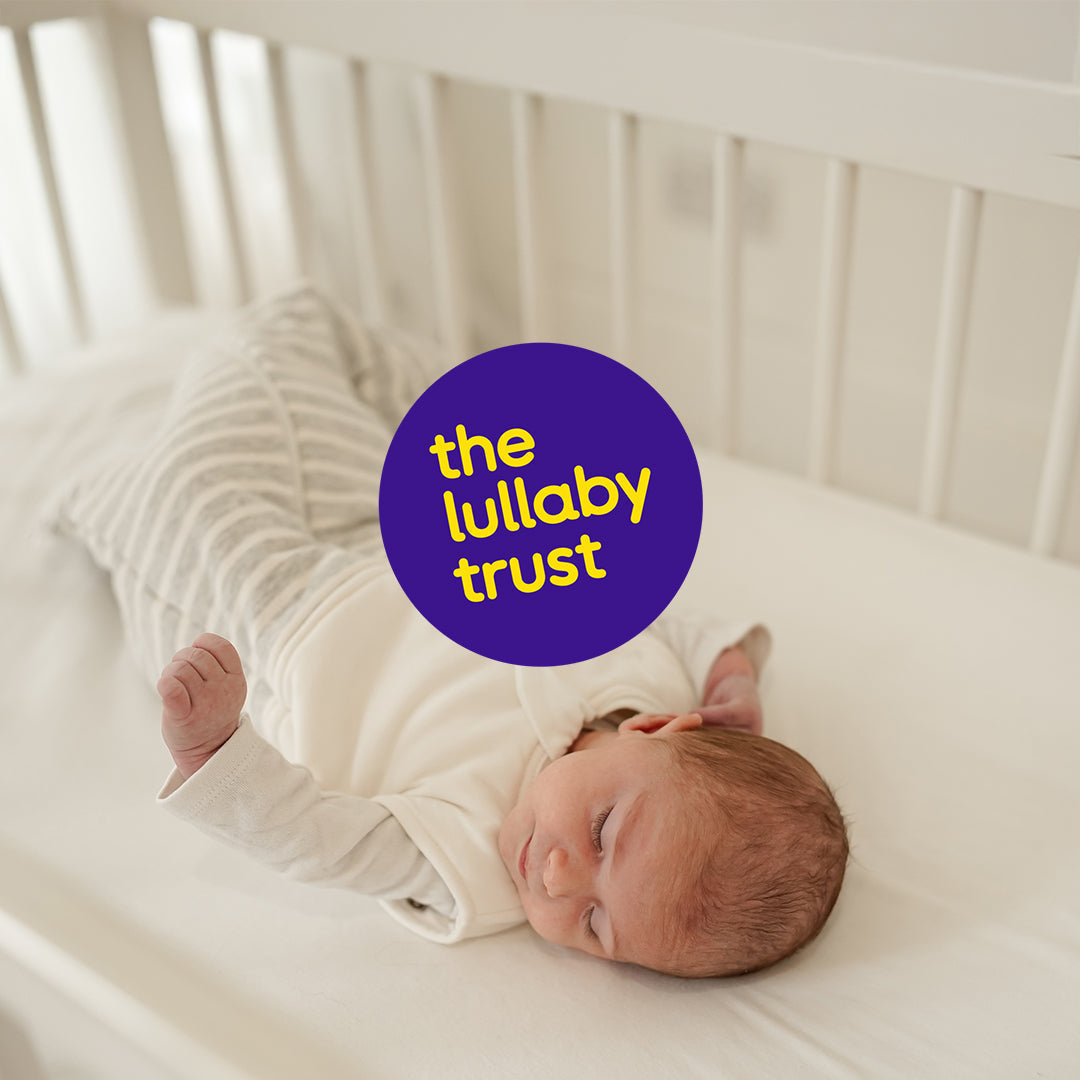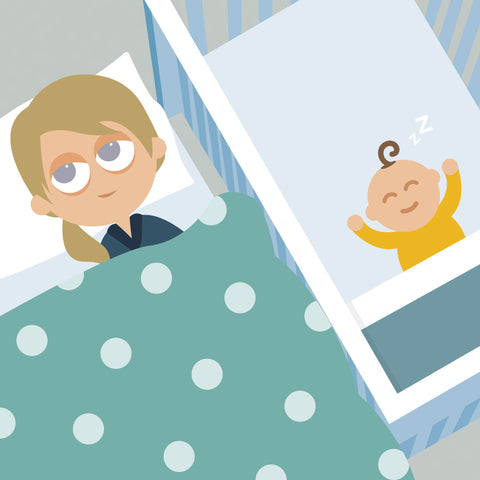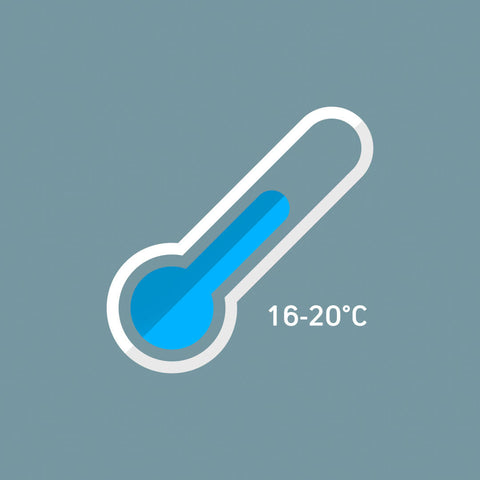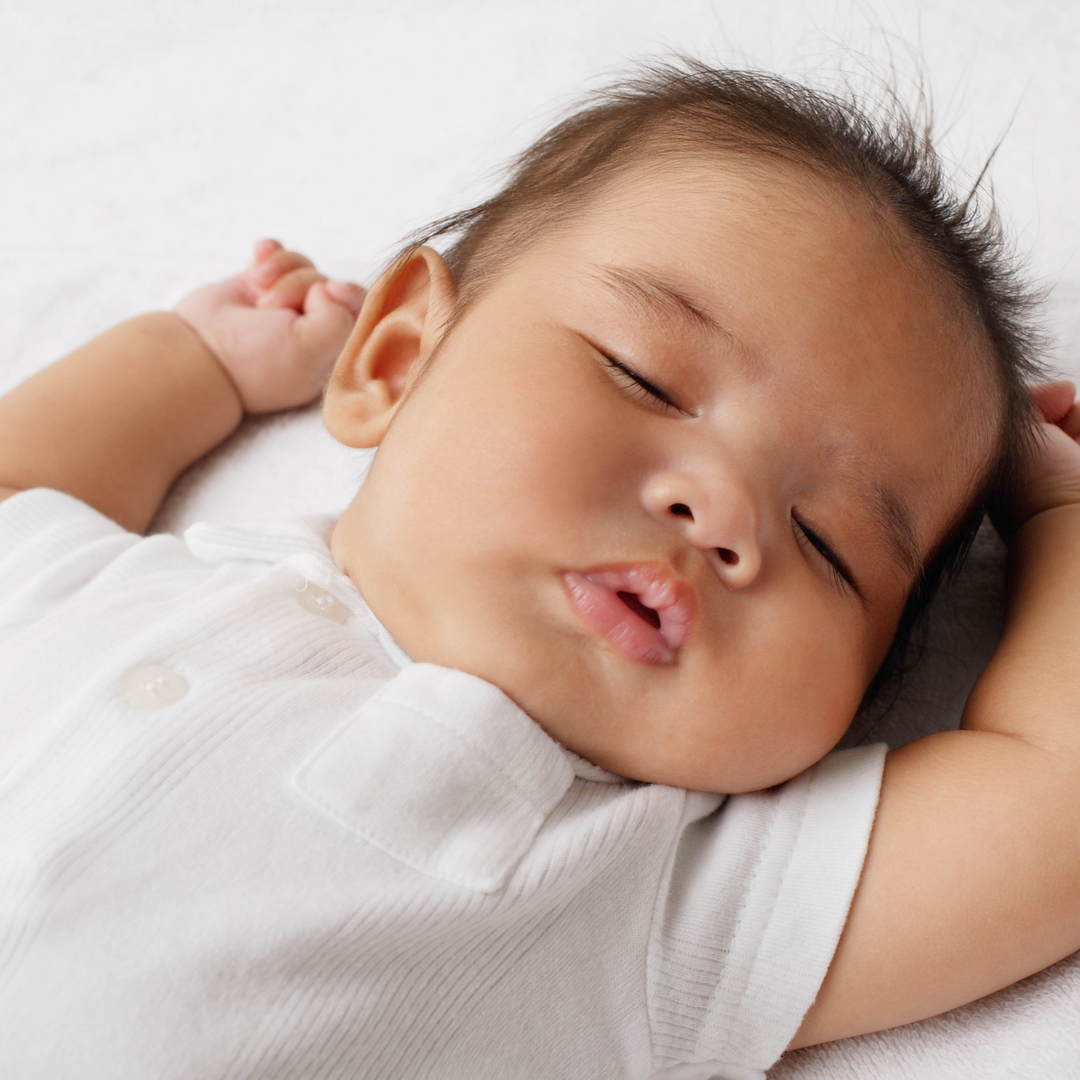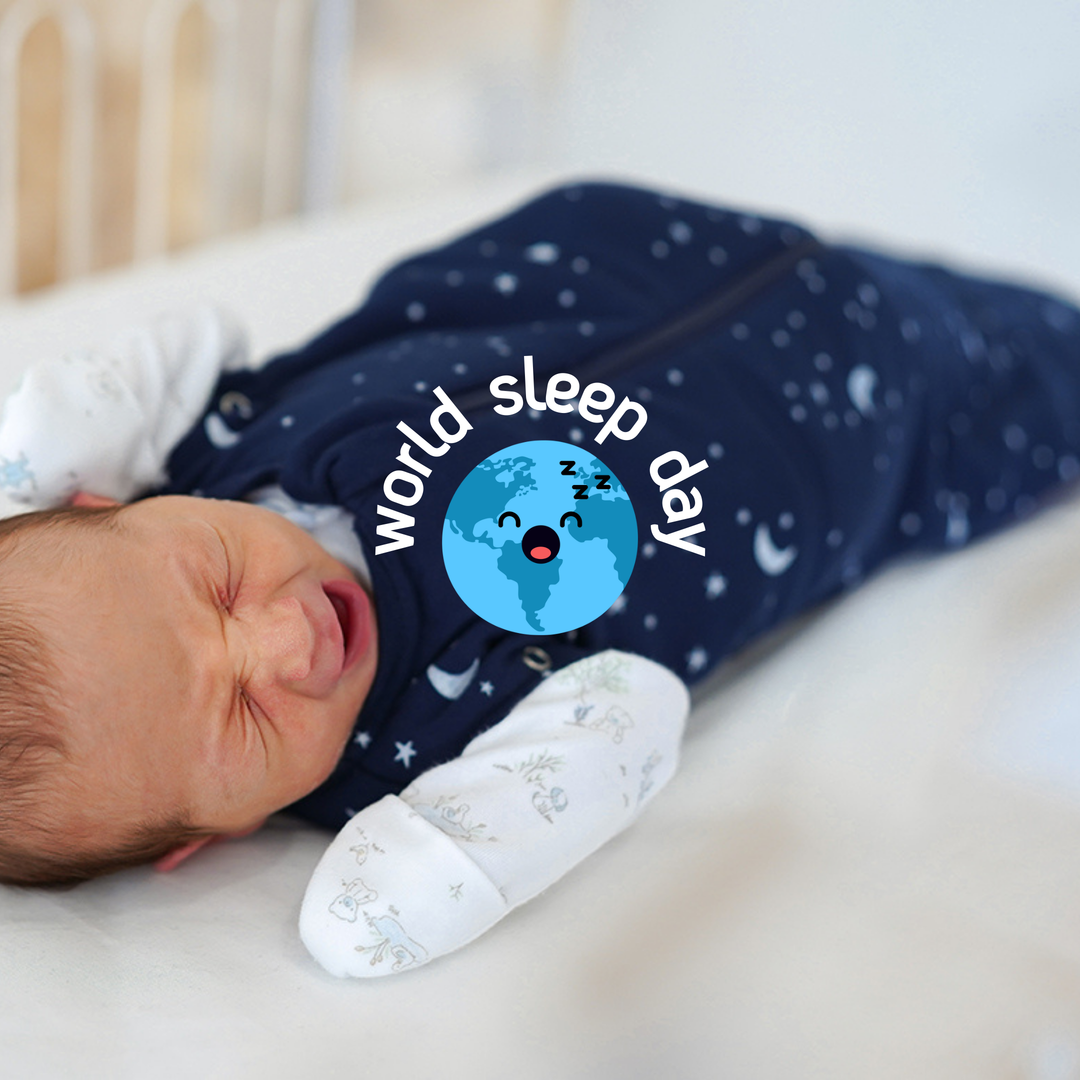When it comes to your little one, nothing matters more than their safety and comfort, especially at bedtime. That’s why we’ve partnered with The Lullaby Trust to bring you a collection of "arms out" infant and toddler sleeping bags designed to support safer sleep. Let’s dive into why this partnership is so important and how you can create a safer sleep environment for your baby.
We’re proud to partner with The Lullaby Trust on our "arms out" baby and toddler sleeping bags, supporting their safer sleep guidance by providing a secure alternative to loose blankets. As The Lullaby Trust takes a neutral stance on swaddling, our partnership focuses specifically on our arms out sleeping bags.
Our sleep swaddle bags, comply fully with British and EU safety standards so they still remain a safe and cozy option for babies who enjoy being swaddled, giving parents peace of mind when choosing the right sleep solution for their little one. For more information on safe swaddling please visit The Lullaby Trust safer swaddling guidance here.
Why We’re Teaming Up with The Lullaby Trust
The Lullaby Trust is the leading charity dedicated to raising awareness of safer sleep practices for babies and supporting families affected by Sudden Infant Death Syndrome (SIDS). By joining forces, we aim to make it easier for parents to follow the best advice for safer sleep while offering high-quality sleeping bags you can trust.
What Does This Partnership Mean for You?
- Expert-Approved Design: Our sleeping bags are designed with safety in mind, following guidelines from The Lullaby Trust.
- Peace of Mind: You’ll know that you’re providing a safer sleep solution for your little one.
- Supporting a Cause: Every purchase supports The Lullaby Trust’s vital work, helping more families learn about safer sleep.
What Makes Sleeping Bags Safer?
Baby sleeping bags are a recommended alternative to loose bedding, which can pose a risk of overheating or covering your baby’s face. Here’s why they’re a game-changer:
- No Loose Blankets: Keeps your baby cozy without the risk of blankets coming loose during the night.
- Temperature Regulation: Designed to help maintain a safe body temperature.
- Freedom to Move: Allows natural movement while keeping your baby snug and secure.
How to Create a Safer Sleep Environment
The Lullaby Trust recommends the ABC of Safer Sleep:
- Alone – Put your baby to sleep in their own sleep space, such as a cot or Moses basket.
- Back – Always place your baby on their back to sleep.
- Clear – Keep the sleep area clear of toys, bumpers, and loose bedding.
Now, let’s explore these essential safe sleep tips in more detail...
The best sleep position for your baby
The safest sleeping position for a baby is on their back so always place your baby on their back to sleep and not on their front or side.
Sleeping your baby on their back (known as the supine position) for every sleep, day and night, is one of the most protective actions you can take to ensure your baby is sleeping as safely as possible.
There is substantial evidence from around the world to show that sleeping your baby on their back at the beginning of every sleep or nap (day and night) significantly reduces the risk of sudden infant death syndrome (SIDS).
Key Information
- The safest sleeping position for a baby is on their back
- Always place your baby on their back to sleep (unless your doctor has advised you of a medical reason not to do so)
- Sleeping a baby on their front or side greatly increases the chance of SIDS
- The chance of SIDS is particularly high for babies who are sometimes placed on their front or side
- Keep your baby’s sleep surface flat. Do not incline, tilt or prop the mattress, cot or baby. Doing so will not help with reflux and is unlikely to improve cold symptoms.
If your baby rolls onto their tummy
Once your baby can move themselves from their back to their front and back again by themselves, they will be able to find their own sleeping position.
The first few times they roll onto their tummy, you might like to gently turn them back, but do not feel you have to get up all night to check. Give them some time to play on their tummy while they are awake to help their development, but make sure you supervise them while they are on their front.
The Lullaby Trust. Safer Sleep. Retrieved January 29th, 2025 from www.lullabytrust.org.uk/safer-sleep-advice/sleeping-position
Sharing a room with your baby
To reduce the risk of sudden infant death syndrome (SIDS) the safest place for a baby to sleep is in their own clear, flat, separate sleep space, such as a cot or Moses basket, and let baby sleep in the same room as you.
Babies should always be in the same room as you for the first six months for sleep, day and night. This doesn’t mean you can’t leave the room to make a cup of tea or go to the toilet, but for most of the time when they are sleeping they are safest if you are close by.
There are no devices on the market that will substitute a parent or carer being in the same room as baby for safer sleep.
Never sleep with your baby on a sofa or armchair
Sofas and armchairs are dangerous places to fall asleep with your baby – move somewhere safer if you might fall asleep.
Reason: the risk of SIDS is 50 times higher for babies when they sleep on a sofa or armchair with an adult. They are also at risk of accidental death as they can easily slip into a position where they are trapped and can’t breathe.
Any time you think you might fall asleep with your baby, make sure they are on their back in a clear, safe space.
The chance of SIDS is lower when you have your baby sleep in the same room as you compared to having them sleep alone.
The Lullaby Trust. Safer Sleep. Retrieved January 29th, 2025 from www.lullabytrust.org.uk/safer-sleep-advice/room-sharing
Co-sleeping with your baby
To reduce the risk of sudden infant death syndrome (SIDS) the safest place for a baby to sleep is in their own clear, flat, separate sleep space, such as a cot or Moses basket. However, we know that many parents find themselves co-sleeping whether they mean to or not. Wherever you’re planning for your baby to sleep we recommend making your bed a safer place for baby. Our advice on co-sleeping with your baby will tell you how.
When not to co-sleep
Whether you choose to co-sleep or it is unplanned, there are some key risks you should avoid.
Co-sleeping with your baby is very dangerous if:
- you or anyone in the bed has recently drunk any alcohol.
- you or anyone in the bed smokes or the baby was exposed to smoking in pregnancy.
- you or anyone in the bed has taken any drugs or medication that make you feel sleepy.
- your baby was born prematurely (before 37 weeks of pregnancy) or weighed under 2.5kg or 5½ lbs when they were born.
In these scenarios, it is always best to put baby in their own safe sleep space, such as a cot or Moses basket. Keeping the cot or Moses basket next to your bed might make this easier.
Never fall asleep on a sofa or armchair with your baby. The risk of SIDS is 50 times higher for babies when they sleep on a sofa or armchair with an adult. They are also at risk of accidental death as they can easily slip into a position where they are trapped and can’t breathe.
Co-sleeping more safely
Adult beds have not been designed or safety tested for infant sleep in the same way as, for example, a cot or Moses basket. Whether you choose to bedshare, or it is unplanned, it is best to think ahead.
- Keep pillows and adult bedding away from your baby or any other items that could cover their head or cause them to overheat. A high proportion of babies who die as a result of SIDS are found with their head covered by loose bedding.
- Remove slatted / decorated headboards.
- Follow all The Lullaby Trust’s other safer sleep advice to reduce the risk of SIDS such as sleeping baby on their back.
- Do not bring other children or pets into bed with you. This will help to reduce the risk of accidents.
- Check that baby cannot be trapped in the bedframe or headboard, wedged or fall out of bed or get trapped between the mattress and the wall.
- Never leave your baby alone in an adult bed. It’s important to consider any risks that an adult bed may post to your baby, especially while you are asleep. As your baby develops, becomes more mobile and can move around, the risks can change, so we recommend checking your bed regularly to prevent possible accidents.
If you are bedsharing with your baby you should consider any risks before every sleep. It is easy for your situation to change if you are unwell or have drunk any alcohol, which means your baby will be safest in a separate sleep space such as a cot or Moses basket on that occasion.
Sharing a room
Babies should always be in the same room as you for at least the first six months for sleep, day and night. This doesn’t mean you can’t leave the room to make a cup of tea or go to the toilet, but for most of the time when they are sleeping they are safest if you are close by.
There are no devices on the market that will substitute a parent or carer being in the same room as baby for safer sleep.
The Lullaby Trust. Safer Sleep. Retrieved January 29th, 2025 from www.lullabytrust.org.uk/safer-sleep-advice/co-sleeping
The safest room temperature
The recommended room temperature for babies is 16-20°C.
It is important to make sure that your baby is a comfortable temperature – not too hot or too cold. The chance of sudden infant death syndrome (SIDS) is higher in babies who get too hot.
A room temperature of 16-20°C – with light bedding or a lightweight, well-fitting baby sleep bag– is comfortable and safe for sleeping babies.
How to check if your baby is too hot or too cold
Every baby is different and our advice on the ideal room temperature for babies is intended as a guide only. You will still need to check your baby regularly to see if they are too hot. To do this, feel your baby’s chest or the back of their neck (your baby’s hands and feet will usually be cooler, which is normal). If your baby’s skin is hot or sweaty, remove one or more layers of bedclothes or bedding.
Our advice on bedclothes and bedding
To avoid over heating, babies do not need to wear hats indoors, nor sleep under a duvet or quilt.
The benefit of sharing a room with your baby
To reduce the risk of SIDS, it is strongly recommended that your baby sleeps in the same room as you, day and night, for at least the first six months. One of the reasons for this is that it helps you to judge the temperature they will be sleeping at.
The Lullaby Trust. Safer Sleep. Retrieved January 29th, 2025 from www.lullabytrust.org.uk/safer-sleep-advice/baby-room-temperature
What should my baby sleep on?
With so many products on the market, it can be tricky to work out which mattress and bedding to buy for a baby. However, some products are definitely safer than others so think carefully before making your choice.
Mattress and bedding for a baby: what to look for
Use a firm, flat, waterproof mattress in good condition
You should use a firm and flat mattress that is protected by a waterproof cover. This will help keep the mattress clean and dry, as the cover can be wiped down.
Make sure your baby’s mattress is in good condition and that it fits the Moses basket or cot properly.
Do not use a sheepskin in a cot or Moses basket or other sleep space. It is important that baby’s sleep space is firm, flat and has a waterproof cover. Adding a sheepskin can reduce firmness and risk overheating.
Avoid using soft or bulky bedding
Firmly tuck in sheets and blankets (not above shoulder height). Sleep your baby in the feet-to-foot position (feet at the bottom of the cot so they can’t wriggle down under the blankets). If your baby needs an extra blanket make sure it is lightweight.
Alternatively, you could choose to use a well-fitted baby sleep bag. Most sleep bag manufacturers will recommend a sleep bag is used when baby is a certain weight (usually around 4kg or 8.8lb) rather than age, so make sure to check the product guidance before using it.
Be sure to remove any soft toys from the cot before each sleep period.
Specific types of bedding to avoid:
- Weighted swaddles
- Weighted blankets
- Weighted sleeping bags
- Quilts
- Pillows
- Duvets
- Sheepskin
Soft or bulky bedding is not recommended for babies under 1 year due to the risk of overheating and head covering.
Pillows can increase the risk of SIDS
Pillow use alone has been shown to increase the chance of SIDS occurring by up to 2.5 times. It is much safer to sleep your baby in a clear, flat, separate sleep space.
Plagiocephaly (‘flat head syndrome’)
If you were thinking of using a pillow with your baby due to concerns around plagiocephaly (‘flat head syndrome’), there are techniques you can use instead which will not increase the risk of SIDS.
For example, we advise that babies have plenty of supervised tummy time in their waking hours to minimise time spent on their back. You should also avoid letting babies sleep in harder contained sleep environments such as car seats and other travel systems.
We understand that plagiocephaly usually corrects itself within a year, but if you feel it is severe you may want to speak to your health professional or seek corrective treatment.
Our advice for using a second-hand mattress
There is some research that found an increased chance of SIDS when using a second-hand mattress brought in from outside of the family home, although the link is not yet proven.
Generally we would advise it is safest to have a new mattress for each baby. However, we know this is not always possible.
To help reduce the risk, we’ve put a checklist together for you.
The second-hand mattress should:
- Have been completely protected by a waterproof cover when in use before
- Have no rips or tears
- Be in good condition
- Still be firm and flat
Remove cot bumpers
Cot bumpers can post the risk of an accident to your baby once they begin to roll and move about the cot. There have been a number of cases in the UK and abroad where infants have become entangled in the ties and material, or fallen from pulling themselves up on the bumpers.
A simple mattress with no loose bedding or bumpers is the safest sleeping place for a baby.
Retrieved January 29th, 2025 from www.lullabytrust.org.uk/safer-sleep-advice/mattresses-and-bedding
Keeping your baby’s cot clear
The safest cot for a baby is a clear cot. That means removing anything that isn’t essential (see list below for more details). Babies need just two items in their cot: (1) a firm, flat, waterproof mattress; (2) lightweight bedding.
Parents now have a massive range of baby sleep products to choose from and it can be really confusing to know what is needed. Our advice is simple: the safest cot is a clear cot.
So whether your baby is sleeping in a cot, crib, Moses basket, pram carrycot or bed-sharing with an adult, keep their sleep space clear.
Keep the cot clear
The safest place for a baby to sleep is in their own clear, flat, separate sleep space, such as a cot or Moses basket in the same room as you. So when you prepare your baby’s sleep space, remember:
- Pillows or duvets
- Cot bumpers
- Soft toys or comforters
- No weighted or bulky bedding
- No products (such as wedges or straps) designed to keep your baby in one sleeping position
- No pods or nests, rolled up towels or anything soft placed on top of the mattress
There is evidence to suggest that babies are at a higher risk of sudden infant death syndrome (SIDS) if they have their heads covered and some items added to a cot may increase the risk of head-covering. Unnecessary items in a baby’s cot, such as cot bumpers and toys, can also increase the risk of accidents.
Therefore, the safest cot is a clear cot because, while evidence on individual items is not widely available, it makes sense to be cautious.
The Lullaby Trust. Safer Sleep. Retrieved January 29th, 2025 from www.lullabytrust.org.uk/safer-sleep-advice/clear-cot/
FAQs About Safer Sleep and Sleeping Bags
At what age can my baby start using a sleeping bag?
Most sleeping bags are suitable from birth, as long as your baby meets the minimum height and weight requirement. Check the manufacturer’s guidelines/product label for specific details.
What tog rating should I choose?
Use a 2.5 tog for cooler months and a 1.0 tog for warmer months. The advantage of using sleeping bags is that you can layer baby’s clothing underneath to ensure they are sleeping safely - removing or adding layers depending upon your baby’s temperature. Our collection includes tog ratings for every season!
How do I know if my baby is too hot or cold?
Use the back of your hand to feel your baby’s chest or back of the neck to check their temperature. It’s not recommended to use their hands or feet, as a guide as these are often colder than baby's core body temperature. If your baby feels hot or clammy you can remove a layer and if they feel cold you can add a layer.
What's the Lullaby Trust's stance on swaddling?
There are various swaddle products on the market such as swaddle blankets, swaddle sacks and swaddle bags. We can’t comment on their safety, but if you buy any swaddle products, make sure they meet safety standards and fit your baby well.
Always follow the individual product’s guidance. For example, some manufacturers recommend their product is based on a baby’s weight rather than their age.
We don’t advise on a specific tog rating for swaddle products, but we recommend going for a lower tog rating to reduce the risk of overheating.
Shop Safer Sleep Today
Browse our infant and toddler sleeping bags and join us in supporting The Lullaby Trust. Every purchase not only helps protect your little one but also contributes to spreading awareness about safer sleep.

